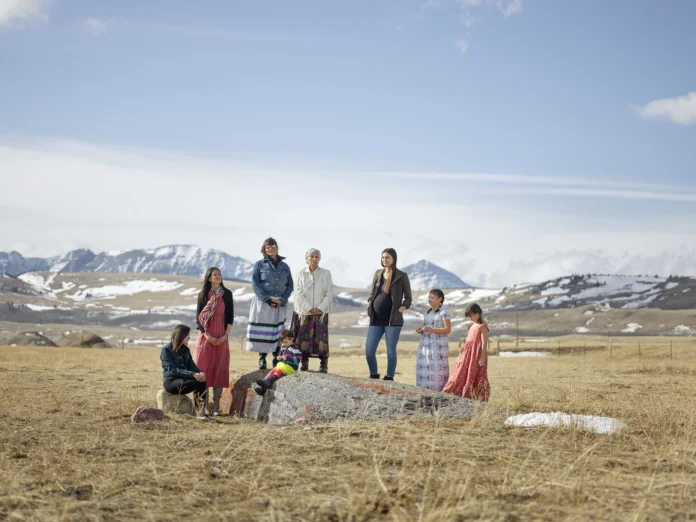In 1851, members of a California state militia called the Mariposa Battalion became the first white men to lay eyes on Yosemite Valley. The group was largely made up of miners. They had been scouring the western slopes of the Sierra when they happened upon the granite valley that Native peoples had long referred to as “the place of a gaping mouth.” Lafayette Bunnell, a physician attached to the militia, found himself awestruck. “None but those who have visited this most wonderful valley, can even imagine the feelings with which I looked upon the view,” he later wrote. “A peculiar exalted sensation seemed to fill my whole being, and I found my eyes in tears.” Many of those who have followed in Bunnell’s footsteps over the past 170 years, walking alongside the Merced River or gazing upon the god-rock of El Capitan, have been similarly struck by the sense that they were in the presence of the divine.
When the roughly 200 men of the Mariposa Battalion marched into Yosemite, armed with rifles, they did not find the Miwok eager for battle. While the Miwok hid, the militiamen sought to starve them into submission by burning their food stores, souring the valley’s air with the smell of scorched acorns. On one particularly bloody day, some of the men came upon an inhabited village outside the valley, surprising the Miwok there. They used embers from the tribe’s own campfires to set the wigwams aflame and shot at the villagers indiscriminately as they fled, murdering 23 of them. By the time the militia’s campaign ended, many of the Miwok who survived had been driven from Yosemite, their homeland for millennia, and forced onto reservations.
Treuer believes that there can be “no better remedy for the theft of land than land” and there is no better land to start returning to the Native American land than the National Parks. This being one of the approaches to taking land acknowledgment a step further than just a statement makes a lot of sense.
Many visit them to find something that exists outside or beyond us, to experience an awesome sense of scale, to contemplate our smallness and our ephemerality. It was for this reason that John Muir, the father of modern conservationism, advocated for the parks’ creation.More than a century ago, in the pages of this magazine, Muir described the entire American continent as a wild garden “favored above all the other wild parks and gardens of the globe.” But in truth, the North American continent has not been a wilderness for at least 15,000 years: Many of the landscapes that became national parks had been shaped by Native peoples for millennia.
Forests on the Eastern Seaboard looked plentiful to white settlers because American Indians had strategically burned them to increase the amount of forage for moose and deer and woodland caribou. Yosemite Valley’s sublime landscape was likewise tended by Native peoples; the acorns that fed the Miwok came from black oaks long cultivated by the tribe. The idea of a virgin American wilderness—an Eden untouched by humans and devoid of sin—is an illusion.
Americans have gradually assimilated to our cultures, our worldview, and our modes of connecting to nature.
Americans, national parks, state parks, whatever way someone decides to look at it, have been injecting Native American values and principles in broad daylight and passing it off as ways they came up with connecting with nature. Nature was regarded as the wilderness and carried a negative connotation before it became this sublime idea and changed how we view the outdoors. Traditional Ecological Knowledge plays a role in this too.

The MHA Interpretive Center (Mandan, Hidatsa and Arikara people) is on Army Corps of Engineers land because that land is near the river, which is so essential to MHA history, Delphine Baker, the director of the Interpretive Center, told me.
The Interpretive Center will be the home for hundreds, if not thousands, of artifacts taken from the tribes over the years. And it will not be merely a show-and-tell kind of endeavor. The center will cultivate traditional plants on a rooftop garden. A café will serve traditional foods. There is a recording studio for preserving tribal languages, and a research space where tribal members will be able to trace their lineage. For so many Native people who have been separated from their tribes because of federal meddling, reconnecting is an important service the center can provide. To call this an Interpretive Center isn’t quite right. It is more like a cultural mothership.
The MHA Interpretive Center is doing important work and is a blueprint for other centers that may have a similar mission. To consider this center a museum is an understatement, these artifacts inside do pass down a history, traditions, recipes, and knowledge for the families tracing their lineage. The recording studio in the center blew me away. I recently read about how the last remaining speaker of South Africa’s oldest language has plans to preserve it. This is so beautiful to me that if shows how much it means that we should keep histories alive, keep telling our stories, know where we come from, because if we aren’t the ones to tell it who will?
Sources: Treuer, D. (2023, October 30). National Parks Should Belong to Native Americans. The Atlantic. https://www.theatlantic.com/magazine/archive/2021/05/return-the-national-parks-to-the-tribes/618395/
MHA Interpretive Center. (n.d.). Official North Dakota Travel & Tourism Guide. https://www.ndtourism.com/new-town/attractions-entertainment/educational-attractions/mha-interpretive-center




